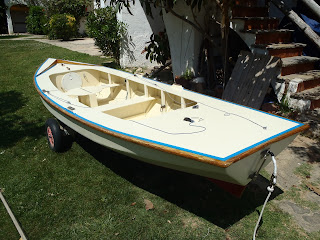The heavy shorebreak ground out
a plodding hymn to monotony.
I walked along the beach my mind
flicking restlessly over various topics—the political conversation
that had dominated lunch and had taken the bite out of the paella,
the sailing of the Shtandart from Tarragona and with it my childish
pipe-dream of embarking (they were looking for crew to sail to
Monaco); the fickle nature of creative satisfaction, it's value in
life's equation and whether it can be substituted by hard cash; how
the sunset, a lurid smear across the western sky, had briefly swept
petty ponderings under the carpet, and how rapidly the same had
returned with the sun below the horizon; and finally, I swear, what I
might eat once home.
In the half light one wave,
larger than the herd, crashed onto the sand sending a flood of spumy
water up the beach, washing round my ankles and filling my turn ups.
The dog nimbly bounced across the strand keeping to the dry. Water
receded, sucking at my soles, leaving the beach glistening darkly.
And suddenly on the black sand flickering stars appeared, flashing
silver and flipping and flapping. I was surrounded by anchovies. My
first thought was 'Dinner!' and I knelt to pick them up but then,
having gathered a handful, I threw them back into the waves. The fish
were frantic and I franticly returned them to the water. They
back-flipped out of my hands and I crawled across the wet sand to
pick them up again and return them to whence they came. The scene was
biblical. Their eyes gazed unblinkingly and their mouths gasped
airlessly and their firm little bodies glinted as they arched back
into the waves. Eventually the remaining fish on the beach stopped
moving and my thoughts turned back to dinner. I harvested the silver
ingots and was forced to store them in my shirt pocket as they slid
from my overloaded palm.
At home in the light their fresh
brilliance continued to amaze. They hadn't been dead 15 minutes. I
rinsed them, floured them, salt'n'peppered 'em and dunked them in hot
olive oil where they bucked and twisted for a moment before turning
crispy and golden. Parsley, lemon, a beer and I stood in the kitchen
popping the anchovies into my mouth. At first their taste was all
that I expected but then there was an unexpected, unpleasant crunch.
Of course, those death throes at the water's edge, all that gasping,
they'd filled themselves with sand.
 |
| photo courtesy of My Kitchen in Spain |
.













































